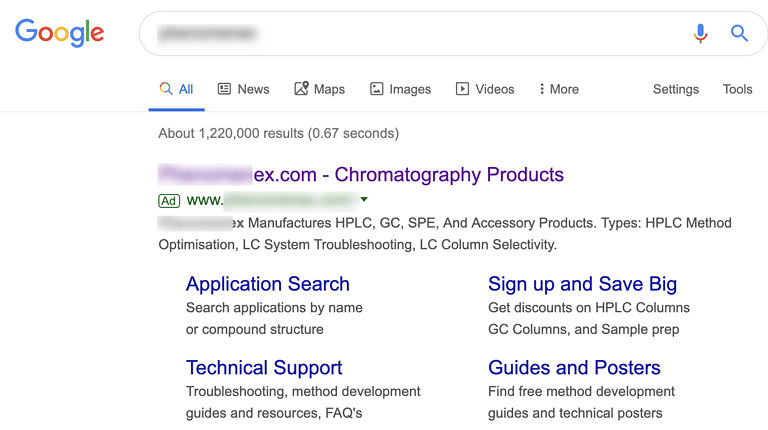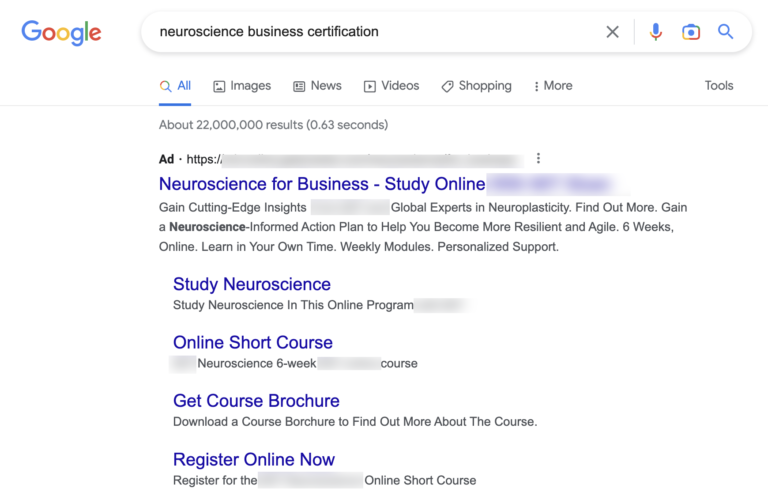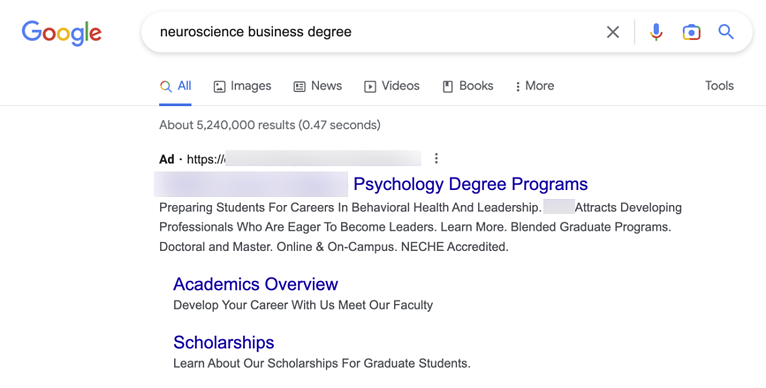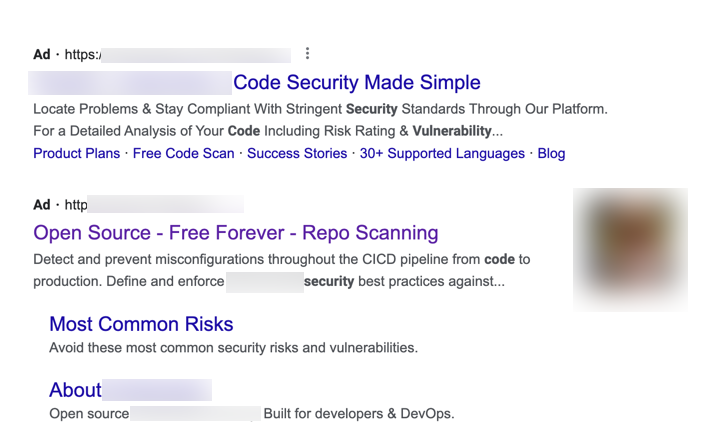Of all the many, many functions available in Google Ads, I have a few that are my favorites. And sitelink assets – previously known as sitelink extensions – are at the top of my list.
Why? Because they’re so versatile. You can do almost anything with them if you think through your strategy carefully.
For example, you can use the mighty sitelink in your advertising to:
- Promote low search volume themes.
- Push lagging products out the door.
- Maximize hot sellers.
- Highlight certain product categories.
- Answer common questions.
- Handle PR problems.
And that’s just a start! Sitelink assets can almost do it all.
Best Practices For Using Sitelink Assets Extensions
If you truly want to get the most out of your sitelinks, you need to think about your intention.
To help you with that, I’m going to lay out a few sitelink guidelines.
1. Get clear on your objectives. Before you start, you need to think about your goals. What are you trying to achieve with these assets? Are you advertising products or services? Will the asset work well with both branded and non-branded keywords? Your answers to these questions will help determine if your sitelinks are versatile and useful to the searcher.
2. Use sitelinks as part of your larger strategy. Don’t think of your sitelinks in isolation. You should also consider the accompanying ad, landing page, and other assets. Make sure they all work together in service to your overarching strategy.
3. Use a mix of sitelinks. Sitelinks can serve multiple purposes, so make sure you’re using a variety. For example, you don’t want to use every sitelink on an ad to promote on-sale products. Instead, use a mix. One could promote an on-sale product, one could generate leads, one could highlight a new product category, and one could direct prospective clients to useful information.
4. Create landing pages for your sitelinks. Ideally, you want to send users to landing pages that tightly correlate with your sitelink instead of just a regular page on your website.
5. Track sitelink performance and adjust. It’s not enough to set up sitelinks. You should also track them to see which links are getting traction and which ones are not. This doesn’t mean that all sitelinks should perform equally (more on this below), but it does mean they should perform well given their type and objectives.
Why it’s Better To Use A Mix Of Sitelink Assets
Let’s dive deeper into this idea of using a mix of sitelinks by looking at an example.
In a new client account, we created four different types of sitelinks:
- Two sitelinks are product-focused (as requested by the client).
- One sitelink connects users with an engineer to learn more about the product (“Speak to an Engineer”). It has more of a sales focus.
- One sitelink allows users to learn more about the products without speaking to an engineer (“What is?”).
The “What is?” sitelink is outperforming the “Speak to an Engineer” sitelink when we measure by CTR. While we need more data before making any changes, I predict we’ll eventually swap out the sales-y “Speak to an Engineer” sitelink for something else.
The fact that the educational link (“What is?”) is performing better than the sales-y link (“Speak to an Engineer”) isn’t too surprising in this case. The product is a new, cutting-edge robot that not many people are aware of, yet. They want more info before talking to someone.
 Screenshot by author, January 2023
Screenshot by author, January 2023By using a mix of sitelinks, and assessing the performance of each, we gained a lot of valuable information that is helping to guide our strategy for this account. So going with a mix of sitelinks is always a good idea. You never know what you’ll discover!
Sitelink Assets Examples
Now, let’s look at some specific examples of sitelink assets in Google Ads.
Example 1: Chromatography
 Screenshot from Google, January 2023
Screenshot from Google, January 2023Application Search: This ad is for a highly technical product that can be used in a wide variety of applications. (Chromatography is a laboratory technique for separating mixtures.) So putting “application search” in a sitelink here might make sense. It helps prospective clients find what they’re looking for.
Sign up and Save Big: A good sitelink for lead generation and potential revenue.
Technical Support: I’m not a big fan of putting technical support in sitelinks. Tech support seems more targeted to current users rather than prospective users. But who knows, maybe they really do want to help current users get tech support via their advertising.
Guides and Posters: Again, this sitelink is a bit unusual, but it might be appropriate for this product. Perhaps people are downloading branded posters and posting them in their workplaces. If so, it’s a great way to build brand awareness.
Example 2: Neuroscience Courses
 Screenshot from Google, January 2023
Screenshot from Google, January 2023I love everything about these sitelinks! The advertising is using them to reach people in all phases of the buyer journey.
For people not ready to commit:
- Study Neuroscience: This sitelink is broad and informational. It’s helpful to people who have just started to explore their options for studying neuroscience.
- Get Course Brochure: This sitelink is also great for people in the research phase. And while we mostly live in an online world, some people still prefer to consume hard-copy books, brochures, etc. With this sitelink, the school is covering its bases.
For people getting close to committing:
- Online Short Course: This is the course the school offers. It’s a great sitelink for those almost ready to sign up.
For people ready to sign up:
- Register Online Now: This is the strongest call to action for those ready to commit. It takes people directly to the signup page.
Example 3: Neuroscience Degrees
Let’s look at another example from the world of neuroscience education: this time for a neuroscience degree program.
 Screenshot from Google, January 2023
Screenshot from Google, January 2023In contrast to the previous two examples, the sitelinks in this ad aren’t as strong.
Academics Overview: This sitelink seems more appropriate for a broad term search, such as a search on the school’s name. If the searcher is looking for a specific degree program (which seems like the intention based on the term and the ad), the sitelinks should be something specific to that particular degree program.
Scholarships: Just as with the above sitelink, “Scholarships” doesn’t seem very helpful either. The topic of scholarships is important—but probably doesn’t need to be addressed until the person determines that this school is a good fit.
Example 4: Code Security
Next, let’s look at two Google search ads for code security products.
 Screenshot from Google, January 2023
Screenshot from Google, January 2023
The sitelinks in these two ads look like typical assets you’d find for SaaS, cloud-based, or tech companies. They click through to a lot of helpful information, such as product plans and success stories.
I particularly like the Most Common Risks sitelink in the second ad. It leads to a helpful article that would be great for engaging top-of-funnel leads.
On the flip side, I’m not a big fan of the Blog sitelink in the first ad. “Blog” simply isn’t very descriptive or helpful.
Still, there are no right or wrong sitelinks here. And it would be interesting to test my theory that blog content is not a top-performing asset!
Sitelink Assets Are More Than An Afterthought
I hope I’ve convinced you of the usefulness and versatility of sitelinks when created with specific objectives that align with your broader strategy.
So don’t create your sitelink assets as an afterthought.
Because if you give them the careful consideration they deserve, they’ll serve you well.
Note: Google sitelink assets were previously known as sitelink extensions and renamed in September 2022.
More resources:
Featured Image: Thaspol Sangsee/Shutterstock
